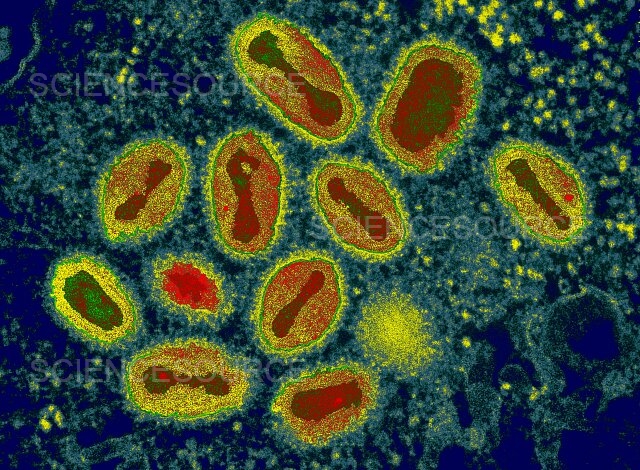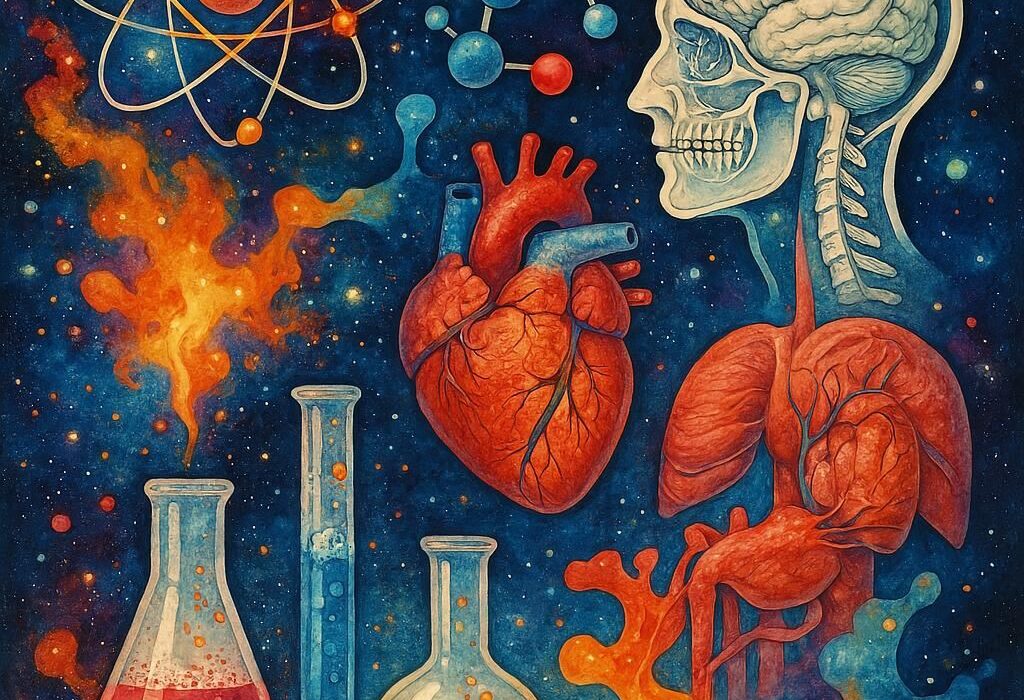Viruses are among the most fascinating yet terrifying agents in the natural world. They are invisible to the naked eye, not quite alive in the traditional sense, yet capable of wreaking havoc on entire civilizations. Throughout human history, viral infections have caused plagues, pandemics, and immense suffering, shaping societies and altering the course of history itself. While many viruses pass unnoticed or cause only mild illnesses, some are devastatingly lethal, spreading with frightening speed and leaving trails of death in their wake.
In this article, we will explore the 10 most dangerous viruses in human history—those that have caused catastrophic pandemics, challenged medical science, and continue to remind us of our fragile place in the natural order. These stories are not just about disease but about resilience, survival, and the unending battle between humanity and the microbial world.
1. Smallpox (Variola Virus)
Few diseases have had as profound an impact on human history as smallpox. Caused by the variola virus, smallpox haunted humanity for millennia, killing an estimated 300–500 million people in the 20th century alone before it was eradicated.
Smallpox was characterized by fever, fatigue, and the appearance of painful, pus-filled blisters that scarred survivors for life. Mortality rates were devastating—up to 30% of infected individuals died, with even higher death tolls among infants and children.
What made smallpox especially dangerous was its contagious nature. Spread through droplets in the air or contaminated objects, it could sweep through populations unchecked. The arrival of Europeans in the Americas brought smallpox to Indigenous populations who had no immunity, resulting in catastrophic depopulation and cultural destruction.
Yet, smallpox also represents one of humanity’s greatest triumphs. Through global vaccination campaigns led by the World Health Organization, the virus was declared eradicated in 1980, making it the first human disease successfully eliminated. Still, the memory of smallpox remains a chilling reminder of how a single virus can alter the course of human history.
2. Influenza (The Flu Virus)
Influenza may seem like an everyday illness, but its history reveals its potential for mass devastation. Caused by rapidly mutating influenza viruses (types A, B, C, and D), flu epidemics occur annually. Yet occasionally, the virus mutates in ways that trigger catastrophic pandemics.
The deadliest example is the 1918 Spanish Flu pandemic, caused by the H1N1 influenza A virus. Unlike seasonal flu, which disproportionately affects the very young and elderly, the 1918 strain killed primarily healthy young adults. Within just two years, it infected nearly a third of the world’s population and killed at least 50 million people. Hospitals overflowed, cities shut down, and mass graves were dug to accommodate the dead.
Since then, other influenza pandemics have emerged, including the Asian Flu (1957), Hong Kong Flu (1968), and H1N1 “Swine Flu” (2009). Each outbreak reminds us of the flu virus’s ability to mutate and jump species barriers, making it one of the most dangerous viruses in human history.
3. HIV/AIDS (Human Immunodeficiency Virus)
First identified in the early 1980s, the human immunodeficiency virus (HIV) sparked one of the deadliest pandemics in modern history. Unlike many viruses that cause rapid illness, HIV attacks the immune system, specifically targeting CD4 T-cells. Over time, this leads to acquired immunodeficiency syndrome (AIDS), leaving individuals vulnerable to opportunistic infections and cancers.
Since its discovery, HIV/AIDS has claimed more than 40 million lives worldwide, with over 38 million people still living with the virus today. In the early years, HIV carried immense stigma, with entire communities marginalized and governments slow to respond. Yet, scientists eventually identified its mode of transmission—through blood, sexual contact, and from mother to child—and developed treatments.
While there is still no cure, modern antiretroviral therapy (ART) has transformed HIV from a death sentence into a manageable chronic condition. However, the virus remains a deadly global health issue, particularly in sub-Saharan Africa, where access to treatment is limited. HIV stands as a reminder of how a microscopic agent can challenge medicine, society, and morality all at once.
4. Ebola Virus
Few viruses strike as much fear as Ebola. First discovered in 1976 near the Ebola River in the Democratic Republic of Congo, the virus belongs to the filovirus family and causes Ebola virus disease (EVD), a hemorrhagic fever with terrifying symptoms.
After a short incubation, patients suffer high fever, severe weakness, and intense internal bleeding. In many outbreaks, victims bleed from the eyes, nose, and other orifices, creating a horrifying image of the disease. Mortality rates range from 25% to 90%, depending on the outbreak and available healthcare.
The largest recorded epidemic occurred between 2014 and 2016 in West Africa, infecting over 28,000 people and killing more than 11,000. The crisis revealed both the deadly nature of Ebola and the vulnerabilities of global health systems.
Though rare, Ebola remains one of the most dangerous viruses known, capable of spreading rapidly through close human contact and devastating entire communities. Advances in vaccines and treatments have improved survival rates, but the virus is far from conquered.
5. Rabies Virus
Rabies is an ancient virus with a reputation for being nearly 100% fatal once symptoms appear. Caused by a lyssavirus, rabies spreads through the bite or scratch of an infected animal—most commonly dogs in developing countries, and bats or wild mammals elsewhere.
The disease begins with fever and confusion but progresses to terrifying neurological symptoms: hallucinations, aggression, paralysis, and a characteristic fear of water known as hydrophobia. Once clinical symptoms manifest, death is almost inevitable.
The good news is that rabies is preventable. A vaccine was first developed by Louis Pasteur in the 19th century, and post-exposure prophylaxis can save lives if administered promptly. Yet, rabies still kills tens of thousands of people annually, mostly in regions with poor access to medical care.
Its near-perfect fatality rate, combined with horrifying symptoms, secures rabies a place among the most dangerous viruses in human history.
6. Hantavirus
In 1993, a mysterious respiratory illness appeared among residents of the Four Corners region in the United States. Patients developed flu-like symptoms that quickly progressed to hantavirus pulmonary syndrome (HPS), a deadly condition that filled the lungs with fluid.
The cause was traced to hantaviruses, carried by rodents and transmitted to humans through inhalation of contaminated droppings or urine. Mortality rates for HPS can reach 40%, making it one of the deadliest viral infections known.
Hantaviruses are found worldwide, with different strains causing either HPS in the Americas or hemorrhagic fever with renal syndrome (HFRS) in Asia and Europe. Because transmission relies on close contact with rodents, outbreaks tend to be sporadic. Yet the unpredictability and lethality of hantaviruses keep them high on the list of dangerous human pathogens.
7. Dengue Virus
Known as “breakbone fever” because of the severe joint and muscle pain it causes, dengue fever is a mosquito-borne viral disease that infects an estimated 400 million people annually. While most cases are mild, severe dengue—also known as dengue hemorrhagic fever—can cause internal bleeding, organ failure, and death.
The dengue virus belongs to the flavivirus family and is spread primarily by the Aedes aegypti mosquito, the same vector that spreads Zika and yellow fever. With no specific antiviral treatment available, prevention relies heavily on mosquito control and vaccines, though vaccination remains limited.
Dengue is especially dangerous because of its global reach. It thrives in tropical and subtropical regions, and with climate change expanding mosquito habitats, the virus threatens to spread further. Though not as fatal as Ebola or rabies, dengue’s massive infection rate makes it one of the most dangerous viruses humanity faces today.
8. Marburg Virus
Closely related to Ebola, the Marburg virus is another member of the filovirus family that causes hemorrhagic fever. First identified in 1967 during outbreaks in Germany and Yugoslavia, Marburg was traced to laboratory monkeys imported from Uganda.
Like Ebola, Marburg is transmitted through close contact with infected individuals and bodily fluids. Symptoms include fever, chills, muscle pain, and, in severe cases, massive internal bleeding and organ failure. Mortality rates can reach 90%, making it one of the deadliest viruses ever encountered.
Though outbreaks have been relatively rare, Marburg poses a significant threat because of its high fatality rate, lack of treatment, and potential to spark deadly epidemics.
9. Zika Virus
The Zika virus gained worldwide attention in 2015–2016, when it spread explosively through South and Central America. Transmitted by the Aedes aegypti mosquito, Zika usually causes mild symptoms—rash, fever, and joint pain—but its true danger lies in its effects on unborn children.
Pregnant women infected with Zika risk giving birth to babies with microcephaly, a condition where the brain and skull do not fully develop. The epidemic led to thousands of cases of birth defects, sparking panic and forcing public health agencies to respond urgently.
Although the outbreak has since subsided, Zika remains a global threat, particularly in tropical regions. With no specific treatment or widely available vaccine, Zika’s potential for devastating birth outcomes secures it a place among history’s most dangerous viruses.
10. SARS-CoV-2 (COVID-19)
The most recent and globally disruptive viral pandemic is caused by SARS-CoV-2, the virus behind COVID-19. First detected in late 2019 in Wuhan, China, the virus spread across the globe within months, triggering one of the most severe public health crises in modern history.
COVID-19 causes a wide range of symptoms, from mild cough and fever to severe pneumonia and multi-organ failure. Older adults and those with underlying health conditions face the greatest risks, but the sheer scale of infection has made the disease deadly on a global level.
By 2025, COVID-19 has caused over 7 million confirmed deaths worldwide, with the true number likely far higher. Beyond mortality, the pandemic brought economic collapse, widespread social disruption, and long-term health consequences, including “long COVID.”
While vaccines and treatments have dramatically reduced mortality, SARS-CoV-2 continues to mutate, spawning new variants that challenge public health efforts. COVID-19 has shown that even in the modern era, a virus can stop the world in its tracks.
Conclusion
From the ancient scourge of smallpox to the modern devastation of COVID-19, viruses have shaped human destiny. They are reminders of nature’s power—microscopic agents that can topple empires, reshape societies, and test the limits of science.
Yet history also shows humanity’s resilience. Vaccines, treatments, and global cooperation have turned once-deadly plagues into preventable or manageable conditions. Still, the battle is far from over. Viruses evolve, adapt, and reemerge, forcing us to remain vigilant.
The most dangerous viruses in human history are not just tales of death; they are also stories of survival, scientific triumph, and the enduring human spirit. They remind us that the line between life and catastrophe is fragile—and that knowledge, compassion, and preparedness are our greatest weapons in the eternal war against invisible enemies.






